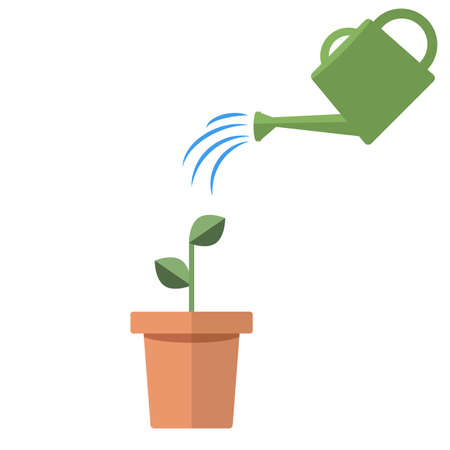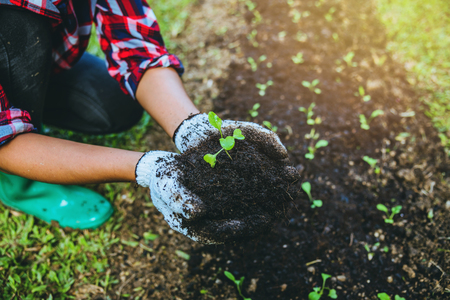1. Drought-Tolerant Plants and Native Landscaping
If youre looking to create a beautiful yard without spending hours watering, pruning, or fertilizing, drought-tolerant and native plants are your best friends. These plants not only adapt well to your local climate but also thrive with minimal care once established.
Why Choose Drought-Tolerant and Native Plants?
Plants that are native to your region have evolved to survive with the natural rainfall and weather patterns. They usually require less water, fewer fertilizers, and are more resistant to pests and diseases. When you combine them with drought-tolerant varieties, you get a low-maintenance landscape that looks great all year long.
Top Benefits:
- Water Savings: Reduce irrigation needs significantly.
- Lower Maintenance: Minimal pruning, fertilizing, or pest control.
- Eco-Friendly: Supports local wildlife and pollinators like bees and butterflies.
Popular Low-Water Plant Choices
| Plant Name | Type | Best For | Water Needs |
|---|---|---|---|
| Lavender | Perennial Herb | Fragrance, Pollinators | Low |
| Blue Fescue | Ornamental Grass | Texture & Color Contrast | Low |
| Sedum (Stonecrop) | Succulent Groundcover | Drought-Prone Areas | Very Low |
| Echinacea (Coneflower) | Native Wildflower | Pollinators & Wildlife Gardens | Low to Moderate |
| Agave | Succulent | Xeriscaping & Modern Landscapes | Very Low |
Tips for Getting Started
- Know Your Zone: Check the USDA Plant Hardiness Zone Map to choose plants suited for your area.
- Avoid Thirsty Lawns: Replace high-maintenance turfgrass with native groundcovers or gravel beds.
- Add Mulch: Use mulch around your plants to help retain moisture and suppress weeds.
- Irrigate Smartly: Install drip irrigation or soaker hoses for efficient watering when needed.
A Quick Guide to Native Landscaping by Region:
| Region | Example Native Plants |
|---|---|
| Southeast US | Black-Eyed Susan, Coral Honeysuckle, Switchgrass |
| Southwest US | Sagebrush, Agave, Yucca, Penstemon |
| Northeast US | Bee Balm, Joe-Pye Weed, New England Aster |
| Pacific Northwest | Kinnikinnick, Oregon Grape, Red Flowering Currant |
| Midwest US | Purple Coneflower, Prairie Dropseed, Blazing Star |
The key to successful low-maintenance landscaping is working with nature—not against it. By choosing drought-tolerant and native plants that are already adapted to your local conditions, youll spend less time on upkeep and more time enjoying your beautiful yard.
2. Mulching for Weed Control and Moisture Retention
One of the easiest ways to keep your yard low-maintenance and looking great is by using mulch. Whether youre working with flower beds, around trees, or in garden pathways, mulch helps prevent weeds from taking over while keeping soil moist longer—so you water less often.
Why Mulch Makes Landscaping Easier
Mulch works like a protective blanket for your soil. It keeps the sun from drying out the ground too fast and stops weed seeds from getting the light they need to grow. That means fewer weeds to pull and less time spent watering. Plus, it gives your yard a neat, finished look.
Types of Low-Maintenance Mulch
| Type of Mulch | Best For | Benefits |
|---|---|---|
| Organic Mulch (e.g., bark, wood chips) | Garden beds, around shrubs and trees | Adds nutrients to soil as it breaks down, natural look |
| Rubber Mulch | Play areas, paths, high-traffic spots | Long-lasting, doesnt decompose, excellent weed barrier |
Simple Tips for Using Mulch Effectively
- Depth matters: Apply 2–3 inches of mulch to block sunlight from reaching weed seeds.
- Avoid piling against trunks: Keep mulch a few inches away from tree trunks and plant stems to prevent rot.
- Refresh annually: Organic mulch breaks down over time; add a fresh layer each year to maintain its benefits and appearance.
By adding mulch to your landscaping plan, youll spend less time weeding and watering—and more time enjoying your outdoor space.

3. Hardscaping Solutions for Effortless Beauty
Hardscaping is a smart and stylish way to create a low-maintenance yard that still looks amazing all year round. By using elements like patios, gravel paths, and decorative stones, you can cut down on the amount of lawn that needs mowing, watering, or fertilizing. These features also add structure and character to your outdoor space, making it more functional and visually appealing.
Why Choose Hardscaping?
Unlike grass or flower beds that need regular care, hardscape features are mostly maintenance-free once installed. They hold up well in various weather conditions and require little to no upkeep aside from occasional cleaning or minor repairs. This makes them perfect for busy homeowners or anyone who wants a beautiful yard without constant work.
Popular Hardscaping Elements
| Feature | Benefits | Maintenance Level |
|---|---|---|
| Patios | Create outdoor living spaces for relaxing or entertaining | Low |
| Gravel Paths | Define walkways and reduce muddy areas; great drainage | Very Low |
| Decorative Stones | Add texture and color; help prevent weed growth when used as mulch | Minimal |
| Pavers | Durable surfaces for driveways, walkways, or patios | Low to Medium (depending on installation) |
| Boulders or Rock Features | Create focal points with no upkeep required | None |
Tips for Integrating Hardscape into Your Landscape
- Start small: If youre unsure where to begin, try adding a gravel path or stone border around existing beds.
- Use local materials: Choosing stones or gravel that match your regions natural colors helps your design blend in seamlessly.
- Add greenery: Mix in drought-tolerant plants between stones or along patio edges for a balanced look without extra work.
- Plan for drainage: Proper grading and base layers are essential to ensure water flows away from your home and hardscape areas.
Create Spaces You’ll Actually Use
A well-designed patio can become an extension of your home—a place for morning coffee, weekend BBQs, or evening relaxation. Gravel paths guide guests through your garden while keeping shoes clean. Decorative rocks fill empty corners beautifully without needing water or trimming. Together, these features transform your yard into a space thats both easy to maintain and enjoyable to spend time in.
4. Evergreens and Year-Round Visual Interest
If youre looking for a yard that stays attractive all year without constant upkeep, evergreens and low-maintenance perennials are your best friends. These plants provide consistent color, texture, and structure throughout the seasons—without needing frequent pruning or replanting.
Why Choose Evergreens?
Evergreens retain their foliage year-round, which means your yard won’t look bare in winter. They also come in various shades of green, blue, and even gold, adding visual interest without extra work. Use them as privacy screens, foundation plantings, or focal points in your garden.
Popular Low-Maintenance Evergreen Shrubs
| Plant Name | Features | Care Level |
|---|---|---|
| Boxwood | Dense foliage, great for hedges | Low |
| Dwarf Alberta Spruce | Compact size, cone shape | Low |
| Juniper | Tolerates drought and poor soil | Very Low |
| Nandina (Heavenly Bamboo) | Colorful foliage with red berries | Low |
Add Seasonal Color with Perennials
Pair evergreens with easy-care perennials that bloom at different times of the year. This way, your landscape changes naturally with the seasons while staying beautiful and manageable.
Easy-Care Perennials for Year-Round Appeal
| Perennial | Bloom Season | Special Features |
|---|---|---|
| Black-eyed Susan | Summer to Fall | Drought-tolerant, bright yellow blooms |
| Hosta | Spring to Summer | Lush foliage, great for shade areas |
| Sedum (Stonecrop) | Late Summer to Fall | Succlent leaves, attracts pollinators |
| Coneflower (Echinacea) | Summer to Fall | Tough and colorful, loved by butterflies |
Tips for Planting Evergreens and Perennials Together
- Group plants by water and sun needs for easier care.
- Use mulch to reduce weeds and help retain moisture.
- Select native or well-adapted plants for your region to cut down on maintenance.
This combination of hardy evergreens and vibrant perennials gives you a dynamic yet low-effort yard you can enjoy every day of the year.
5. Smarter Lawns with Less Grass
If youre tired of mowing, watering, and fertilizing your lawn every weekend, its time to rethink the traditional grass-heavy yard. A smarter lawn doesnt have to mean sacrificing that green, lush look—it just means using low-maintenance alternatives that save time, water, and money.
Why Limit Traditional Lawn Areas?
Traditional turfgrass requires a lot of upkeep. Between frequent mowing, regular watering, and seasonal fertilizing, it can become a full-time job. By reducing the square footage dedicated to grass, you can create a yard thats easier to manage and more eco-friendly.
Great Alternatives to Grass
Here are some popular low-maintenance alternatives that still give you a beautiful green space:
| Alternative | Benefits | Best For |
|---|---|---|
| Groundcovers (like creeping thyme or mondo grass) | No mowing needed, drought-tolerant, soft underfoot | Sunny or shady spots where foot traffic is light |
| Artificial Turf | Always green, zero watering, no mowing | Play areas, pet zones, modern landscapes |
| Clover Lawns (white clover) | Naturally fertilizes soil, stays green longer in droughts | Pollinator-friendly yards, low-traffic lawns |
Tips for Transitioning Away from Traditional Grass
- Start small: Replace just one section of your yard to see how it works for you.
- Mix and match: Combine groundcovers with stepping stones or mulch paths for visual interest.
- Think location: Use artificial turf in high-traffic areas and clover in open spaces that need less care.
Your Lawn Can Still Be Beautiful—With Way Less Work
You don’t have to give up having a nice-looking yard. By choosing smarter lawn solutions like groundcovers, artificial turf, or clover, you’ll enjoy the beauty of green space without all the hassle. Its a win-win for your weekend schedule and the environment.


